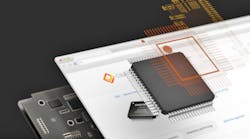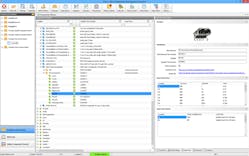Download this article in PDF format.
It’s Friday afternoon and after three months of long days, your masterpiece is finally complete. Today is the deadline for releasing your design, so that the contract manufacturer can start your build next week. Prototypes need to be ready in two weeks for that all-important trade show, where your brilliant, shiny new creation will be the center of attention.
Going from the design to the physical PCB assembly is what we call electronics design realization. For many people, it’s a process fraught with difficulties and can be very stressful.
BOM or Timebomb?
The bill of materials (BOM) is the linchpin of your design. It connects the design, manufacturing, and supply-chain domains. Considered by many as simply another output from the design process that’s kicked over the fence, the BOM contains enough information to reflect what’s in the design, but also often ambiguities, or worse, errors, when it comes to purchasing the parts you actually need. Missing part numbers, partial part numbers, or incorrect part numbers can result in countless emails and phone calls with your contract manufacturer before you can even attempt to order all of the parts you need.
Part Availability (or lack thereof)
You’ve used a superlative power-management IC in your design that meets all your technical requirements. The problem is, now that you’re trying to source it, you find that the case variant you selected doesn’t quite have the availability that was indicated by your favorite distributor a few weeks ago. In fact, finding some for your sample build is like finding a needle in a haystack.
Incorrect Parts
Now imagine you finally resolve your BOM issues, your PCBs are back from fabrication, and your contract manufacturer is about to start assembly. You arrange to have an overnight courier send the two prototype assembled PCBs back to you so you can work on the board bringup in preparation for the show. Phew, things are coming together. Or maybe not...
The phone rings. There’s a problem on the assembly line. You have a quad-flat no-leads (QFN) footprint in your design for the USB hub IC, but the reel that’s been delivered contains the thin-shrink small outline package (TSSOP) variant! How did this happen? It seems that the part number in the BOM specified the TSSOP variant, whereas the one you used in your design was the QFN variant. A single letter mistake in the suffix.
Ciiva’s cloud-based bill-of-materials (BOM) service helps automate the management design process.
This must have happened a few nights ago when you were working late, going through datasheets decoding part number schemas to complete the missing info in the BOM. Unfortunately, it’s too late to do anything about it. The part will be left off, and now you have one massive problem that may not be solvable in time for next week’s show. Now, after all your hard work, one part number error has risked everything.
For many readers, problems like this will be all too familiar. We try to learn from these mistakes and often introduce new checks and balances with homegrown systems to stop them from happening. But problems in the realization phase will keep occurring, each time with an issue slightly different to one we have seen before. And as new engineers come into the design world, they’re almost certain to repeat the mistakes of more seasoned designers who have learned (and are still learning!) from having their hands burnt.
These examples are basic, but many, many more issues crop up in realization time and time again. Fortunately, you can avoid these issues by familiarizing yourself with best practices that will guide your process.
Knowledge is Power
Oftentimes, we don’t have all of the information we need to make a decision, and sometimes we don’t even know that we don’t have it. The supply-chain problem is a good example of this. Your favorite distributor might have something in stock today, so you choose to use it; but historically, the part has had sporadic availability.
It also turns out that there’s another variant in the family that would meet your needs, but it wasn’t included in your version of the datasheet. As a result, you weren’t aware of it at design time, and it isn’t a drop-in replacement. Had you been presented with all of this information earlier on in the design phase, you might have made a different decision. Being well informed will not only point you in the right direction, it can also reduce or eliminate some hurdles altogether.
Discontinuity
Inside our design environment, everything is nice and cozy and things fit together perfectly. But once we leave this world, we’re often thrust into the realm of uncontrolled Excel spreadsheets, Google docs, and long chains of emails. Post-design, controlling critical assets like the BOM can quickly become unwieldy.
File-based documents are easy to duplicate and share, but you’re never 100% sure everyone is on the same page and is using the latest version. Critical information captured in the realization domain that needs to be communicated to the design domain might never make it back. Avoiding these setbacks doesn't have to be difficult and solutions are well within reach, granted you've equipped yourself with the right tools and information.
There are many obstacles in successful electronics design realization and no silver bullet for all of them. However, leveraging data as part of automated checks ensures continuity and the flow of information between design, manufacture, and supply-chain domains. Having the right information goes a long way in mitigating the risks involved and stopping them from ever reoccurring.
Never Get Your Design Rejected Again
Despite all of these roadblocks standing in the way of your design, there are solutions available to help you navigate the rough seas of managing your BOM. Cloud-based solutions like those from Ciiva (see figure) allow designers and managers to easily select, verify, and manage your parts to ensure a manufacturable BOM. With intelligent data at your fingertips, you can make the most informed decisions and refine your part choices so that you'll never get a design rejected again.


